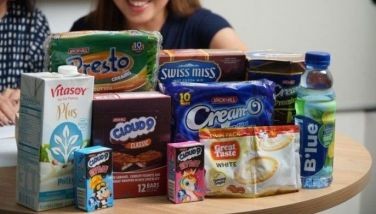Metro Manila’s ‘little Singapore’
April 14, 2003 | 12:00am
That Marikina City is sometimes called Metro Manila’s "little Singapore" is not an accident. Like Singapore, Marikina has imposed strict rules on spitting and littering within the city. It has the highest garbage collection efficiency rate in the country (99%) and the cheapest garbage collection cost per person (P87). Almost 95% of the city’s 373.8 kilometers of roads have also been concreted.
Because it has rejected the color-coding scheme on vehicles, the city has attracted distribution companies and fastfood commissaries.
"Like Singapore, Marikina is small. The city does not have a lot of agricultural lands, and our remaining undeveloped properties are not big, just pockets," said Mayor Lourdes Carlos-Fernando. "Industrialization was the key to Singapore’s success. By the mid-1970s, Singapore promoted its industrial and manufacturing sector by providing low-cost labor and low to middle level technology. Marikina has been following that model."
Marikina has been attracting investors (which have been growing by an average of 12% a year) with a disciplined, well-trained, and highly educated labor force with a 99.16% literacy rate, The city is host to the Cottage Industry Training Center, which was formerly known as NACIDA, and the Marikina Institute of Science and Technology, which offers not only high school education but also vocational courses.
The city’s employment rate currently stands at 78.8%.
The city government is currently negotiating with Fortune Tobacco Co., the city’s biggest taxpayer and employer, to put up a university near its factory. An SM mall is scheduled to open next year near the newly developed Riverbanks Mall by the Pasig River. Metropolitan Bank and Trust Co. will begin construction of a residential building along the main highway which connects Marikina to Antipolo City.
Marikina’s efforts to attract investors have not gone unnoticed. Based on a 2002 nationwide survey of 34 cities conducted by the Asian Institute of Management for the Department of Trade and Industry, Marikina had the fifth lowest cost of doing business and had the eighth most dynamic local economy. It was the tenth most competitive city in the overall ranking.
To make it more attractive to investors, Marikina has regularly set aside funds to build new roads and to open alternate routes for both private and public vehicles. For example, the road beside the Pasig river is currently being developed to further decongest the main roads and to provide travelers a scenic view.
The city will also spend P250 million to improve the drainage and the sidewalks. So far, the city is the only one in the country to provide a bicycle lane that leads to the church and the market from different locations in the city.
To make it more business friendly, the city has received a $43,000 infrastructure funding from the Singaporean government.
Even as it diversifies its investors’ mix, the city government has joined hands with the private sector in reviving the shoe industry, which was greatly affected by the influx of cheap, imported shoes from China. The Sikap Mo is a private corporation put up by the major shoe manufacturers and suppliers dealers to professionalize small and medium shoe factory owners, create a brand that will match the marketability and profitability of imported shoes, and eventually to manufacture export-quality products.
"We are sponsoring caravans to showcase the best products of the city and to encourage the development of industries aligned to shoe making," said Fernando. At the top of Marikina’s best products are its people and the clear vision of its city managers.
Because it has rejected the color-coding scheme on vehicles, the city has attracted distribution companies and fastfood commissaries.
"Like Singapore, Marikina is small. The city does not have a lot of agricultural lands, and our remaining undeveloped properties are not big, just pockets," said Mayor Lourdes Carlos-Fernando. "Industrialization was the key to Singapore’s success. By the mid-1970s, Singapore promoted its industrial and manufacturing sector by providing low-cost labor and low to middle level technology. Marikina has been following that model."
The city’s employment rate currently stands at 78.8%.
The city government is currently negotiating with Fortune Tobacco Co., the city’s biggest taxpayer and employer, to put up a university near its factory. An SM mall is scheduled to open next year near the newly developed Riverbanks Mall by the Pasig River. Metropolitan Bank and Trust Co. will begin construction of a residential building along the main highway which connects Marikina to Antipolo City.
Marikina’s efforts to attract investors have not gone unnoticed. Based on a 2002 nationwide survey of 34 cities conducted by the Asian Institute of Management for the Department of Trade and Industry, Marikina had the fifth lowest cost of doing business and had the eighth most dynamic local economy. It was the tenth most competitive city in the overall ranking.
The city will also spend P250 million to improve the drainage and the sidewalks. So far, the city is the only one in the country to provide a bicycle lane that leads to the church and the market from different locations in the city.
To make it more business friendly, the city has received a $43,000 infrastructure funding from the Singaporean government.
"We are sponsoring caravans to showcase the best products of the city and to encourage the development of industries aligned to shoe making," said Fernando. At the top of Marikina’s best products are its people and the clear vision of its city managers.
BrandSpace Articles
<
>
- Latest
Latest
Latest
February 21, 2025 - 9:00am
February 21, 2025 - 9:00am
February 13, 2025 - 12:00am
February 13, 2025 - 12:00am
January 30, 2025 - 4:05pm
January 30, 2025 - 4:05pm
January 27, 2025 - 11:00am
By Jay Ann Bonghanoy | January 27, 2025 - 11:00am
January 24, 2025 - 8:00am
January 24, 2025 - 8:00am
Recommended

























